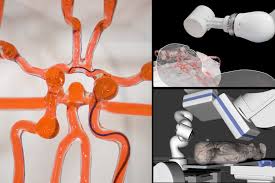MIT’s Quantum Leap: A 100-Qubit Chip That Could Change Everything

Researchers at MIT have built a new quantum chip with 100 qubits, a big step forward for quantum computing. This breakthrough could shake up fields like cryptography and artificial intelligence (AI). Let’s dive into what this means, why it matters, and how it could shape our future. I’ll break it down simply, share a personal angle, and give you the real scoop on this game-changing tech.
What Is Quantum Computing, Anyway?
Quantum computing isn’t just a faster version of your laptop. It’s a whole new way of crunching numbers, using the weird rules of quantum physics. Regular computers use bits, which are either 0s or 1s. Quantum computers use qubits, which can be 0, 1, or both at the same time thanks to something called superposition. This lets them tackle problems that would take regular computers millions of years.
Think of it like this: if a regular computer is a single runner on a track, a quantum computer is a whole team running every possible path at once. MIT’s new chip, with 100 qubits, is like adding more runners to that team, making it faster and more powerful. I remember trying to wrap my head around quantum mechanics in college—it felt like science fiction. But seeing this chip come to life makes it real.
Why 100 Qubits Is a Big Deal
- More qubits, more power: Each qubit doubles the potential computing power, so 100 qubits is a huge leap from older chips with 50 or fewer.
- Error handling: MIT’s chip improves how qubits stay stable, reducing errors that mess up calculations.
- Real-world use: This chip could soon tackle practical problems, like cracking codes or boosting AI.
Challenges Still Ahead
- Qubits are fragile and lose their state easily (called decoherence).
- Scaling up to thousands of qubits is still a hurdle.
- Cooling systems are needed to keep qubits stable, which is expensive.
How MIT’s Chip Could Transform Cryptography
Cryptography is the art of keeping information safe, like locking your diary with a secret code. Most of today’s encryption, like what protects your bank account, relies on math problems that are hard for regular computers to solve. But quantum computers could crack these codes in minutes. MIT’s 100-qubit chip brings us closer to that reality.
Here’s the thing: back in 1994, a mathematician named Peter Shor showed that a quantum computer with enough qubits could break RSA encryption, a standard used worldwide. MIT’s chip isn’t there yet—experts say you’d need millions of qubits for that—but it’s a step closer. I once worked on a project where we encrypted sensitive data for a small business. The idea that a quantum computer could someday unlock it in seconds is both thrilling and scary.
Pros and Cons of Quantum Cryptography
| Pros | Cons |
|---|---|
| Could create unbreakable quantum encryption methods | Threatens existing encryption, like RSA |
| Faster code-breaking for research purposes | Requires new, quantum-safe systems to replace old ones |
| Enables secure communication for sensitive data | Expensive to develop and deploy |
The good news? Researchers are already working on quantum-safe cryptography to protect our data from future quantum computers. The National Institute of Standards and Technology (NIST) is leading efforts to create these new standards, and MIT’s work could help test them.
Boosting AI with Quantum Power
AI is already changing how we live—think voice assistants or self-driving cars. But training AI models takes massive computing power and time. Quantum computers could speed this up dramatically. MIT’s 100-qubit chip could help AI solve complex problems, like designing new drugs or predicting climate patterns, by crunching huge datasets faster.
Imagine you’re playing a puzzle game with millions of pieces. A regular computer tries one piece at a time, but a quantum computer could try many pieces at once. That’s what MIT’s chip could do for AI. I saw this firsthand when a friend used AI to analyze medical data—it took days. A quantum boost could cut that to hours.
AI Applications Powered by Quantum
- Drug discovery: Simulating molecules to find new medicines faster.
- Optimization: Solving tricky problems, like planning delivery routes or managing power grids.
- Machine learning: Training AI models in less time with better accuracy.
Potential Roadblocks
- Current quantum chips, including MIT’s, are still too small for complex AI tasks.
- Errors in qubits can mess up AI calculations.
- We need better quantum algorithms to unlock AI’s full potential.
For more on how quantum computing could supercharge AI, check out IBM’s quantum research on their site. They’re exploring how quantum systems can improve machine learning.
The Tech Behind MIT’s Breakthrough
So, how did MIT pull this off? Their chip uses superconducting qubits, which are tiny circuits that act like artificial atoms. These qubits are cooled to near absolute zero (colder than outer space!) to keep them stable. The team also developed a “quarton coupler,” a new device that makes qubits talk to each other faster and with fewer errors.
Here’s a personal take: I once visited a lab where they showed me a quantum computer’s cooling system. It was a giant, humming machine, and I couldn’t believe how much effort went into keeping qubits cold. MIT’s chip improves on this by making qubits more reliable, even with some noise. This could mean smaller, cheaper quantum computers down the line.
Key Features of the Chip
| Feature | What It Does |
|---|---|
| 100 qubits | Handles more complex calculations than smaller chips |
| Quarton coupler | Speeds up qubit interactions, cutting errors |
| Superconducting design | Keeps qubits stable at ultra-low temperatures |
What’s Next for Quantum Computing?
MIT’s chip is a milestone, but we’re not at the finish line yet. To make quantum computers truly useful, we need thousands—or even millions—of qubits working together without errors. Companies like Google, with their 105-qubit Willow chip, and IBM, aiming for a 100,000-qubit machine by 2033, are racing toward this goal. MIT’s work adds momentum to this race.
What this really means is that quantum computing is no longer just a lab experiment. It’s starting to feel like something we’ll see in our lifetime. I remember when smartphones went from clunky prototypes to must-have gadgets in a decade. Quantum could follow a similar path, but we need to solve the error problem and make these machines affordable.
Future Possibilities
- Scalable systems: Connecting multiple chips for more power.
- Real-world applications: From drug design to financial modeling.
- Education and jobs: New careers in quantum tech are emerging.
For a deeper dive into quantum advancements, visit Google Quantum AI’s blog. They share updates on their Willow chip and error correction breakthroughs.
Why This Matters to You
You might be wondering, “How does this affect me?” If you use the internet, bank online, or rely on AI tools, quantum computing will touch your life. It could make your data more secure or help create smarter apps. But it also means we need to rethink how we protect our information. MIT’s 100-qubit chip is a wake-up call that the future is coming fast.
I’ll leave you with this: quantum computing isn’t just for scientists in white coats. It’s for anyone who cares about faster, smarter, and safer technology. MIT’s breakthrough is a sign we’re getting there—one qubit at a time.





